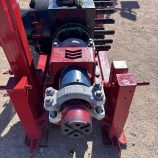Well Completions 2024: What Will It Look Like?

Posted: January 9, 2024
The landscape of well completions has experienced significant evolution in recent years, underpinned by technological advancements and a drive toward maximizing operational efficiency and recovery. Today’s well completion practices are not only a testament to engineering acumen but also speaks volumes about the industry’s adaptability in the face of shifting economic and environmental pressures.
We explore the current state of well completions, providing insights into the latest technologies, techniques, and trends that push the boundaries of what’s possible while adhering to increasingly stringent regulations and public scrutiny.
State of Well Completions in 2023—The Past Year
The global well completions market size continued to grow steadily at the end of 2023, driven by increased exploration and drilling activities, higher demand for oilfield services, and oil price recovery. Between 2021 and 2026, the global well completion market size is estimated to grow at a CAGR of 3.8% to US$ 13.5 billion.
Global Demand for Production to Increase
According to field services company Baker Hughes, the number of rigs drilling for oil in August 2023 had fallen 16% since its peak in December of the year prior. The output of the lower 48 states of the U.S. reached its peak in the third quarter of 2023 as exploration and production firms worked their way through the inventory of drilled but uncompleted oil wells.
Government policies, market trends, and high demand from the petrochemical and aviation sectors will continue to drive global oil demand. The International Energy Agency (IEA) forecasts a 6% increase in global oil demand between 2022 and 2028. Global upstream investments are projected at $580 billion in 2024 (an 11% year-on-year increase), to generate over $800 billion in free cash flows.
Due in part to the industry’s solid financial position and high oil prices, 2024 is expected to start strong. With new technologies, techniques, and state-of-the-art flow control solutions, operators can better navigate well completions to maximize output while reducing costs.
An Eye Toward the Challenges Ahead for the Oil & Gas Industry in 2024
The EIA predicts that the production of crude oil in the Permian Basin will increase by 350,000 barrels per day (bpd) in 2024, with production in other US regions increasing by 70,000 bpd. Although this outlook for 2024 is optimistic, the oil and gas industry may still face some noteworthy challenges.
As resource accessibility and quality decline and more accessible reserves are depleted, operators may turn to remote locations or unconventional sources. These are more difficult and costly to exploit; ensuring worker safety and minimizing environmental impacts are also critical concerns that can present operational challenges, especially in these harsh environments.
Maintaining high operational efficiency and uptime while minimizing downtime due to maintenance or technical issues is necessary for profitability. Labor concerns, material-supply uncertainty, and insufficient spare part inventories can interfere with field operations and project completion. In addition, adhering to ever-evolving regulations and standards can require changes to production processes and technologies, often at significant expense.
As a leader in flow control solutions, Gilmore addresses some of these challenges with products that dramatically increase maintenance intervals. We also employ a strategic spares strategy and ensure the availability of components through design adaptability and versatility. This enables the use of similar components across varying fields and conditions.
Gilmore also offers an aftermarket maintenance and repair service as well as spare kits and training. This allows for fast problem resolution, reduced downtime, and improved efficiency. All components meet or exceed API requirements, ensuring compliance with regulatory guidelines and industry standards.

Technological Advancements in Well Completions
Technological advancements can provide numerous benefits in terms of improved safety, productivity, efficiency, cost savings, and reduced environmental impact. Autonomous well intervention systems use artificial intelligence, robotics, and remote monitoring to carry out maintenance, inspections, repairs, or data collection without or with minimal human involvement.
Smart Wells
Smart wells or intelligent wells employ sensors and valves that allow for real-time monitoring and management of production operations. These technologies enable operators to adjust settings—such as the flow rate of oil or gas—or to isolate certain zones within the reservoir without direct human intervention at the well site.
Robotics and Automation
Oil and gas operators face dangers due to complex, rugged environments. To combat this risk, the industry is embracing robotics and automation. Robots aid inspection, surveying, and industrial automation, enhancing speed and efficiency while reducing costly human-induced errors and manpower requirements.
Predictive Maintenance
Predictive maintenance and operations integrate field-installed sensors with machine learning algorithms. This allows engineers to quickly identify potential equipment conditions and initiate timely maintenance. Additionally, software platforms enable granular part visualization, which helps operators predict impending failures.
Partnering Strategically to Optimize Well Completions in 2024
Well completion optimization demands advanced maintenance strategies and system reliability. Gilmore has more than half a century of flow control expertise. We prioritize developing advanced and customizable technologies that improve efficiency, safety, and durability. Through innovation, masterful engineering, and meticulous testing, our flow control solutions reduce downtime, maintenance cycles, and costs while enabling higher productivity.
At Gilmore, we specialize in creating custom flow control solutions in collaboration with our customers. Gilmore’s engineers undertake the entire process from design to deployment with full compliance. Whether you require a standard or tailored flow control solution to improve productivity, maintain safety, and reduce operational costs, we can help. Let’s chat.




